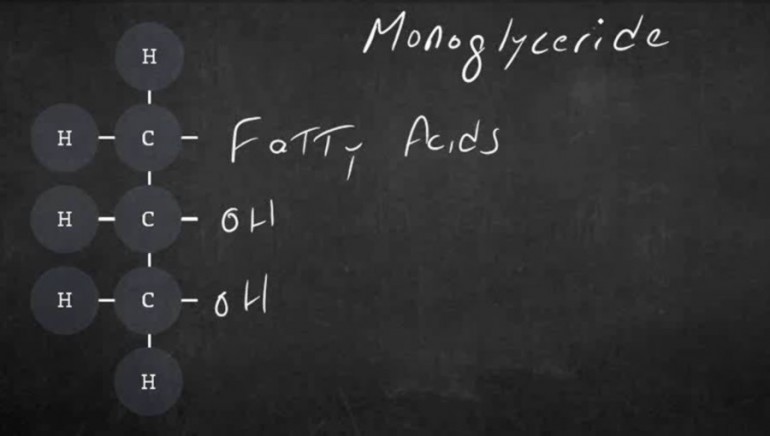
Feed Lipids: Nomenclature and Analysis – Dr. Tom Jenkins
May 25, 2012
Feed Lipids: Nomenclature and Analysis Q&A
- Is it important to have a certain type and amount of omega fatty acids in the diet?
There are 3 classes of omega fatty acids in the diet. 1) Omega-9, Oleic acid, is an important fatty acid for the tissues, however the tissues are capable of synthesizing it in the amount that is required. It is not critical or essential to have in the diet. 2) Omega-6, Linoleic acid, and 3) Omega-3, Linolenic acid, are essential fatty acids for proper tissue function in the animal. There are different omega-3 and omega-6 products that are critical for proper tissue function in the animal, but they are all derived from these two parent compounds. It is important to have enough of these essential fatty acids being digested and absorbed everyday to meet the needs of the animal. There is evidence that we don’t always have enough of them. The cow typically eats enough omega-3’s and omega-6’s in the diet. The problem is the microorganisms in the rumen can destroy them and limit the supply to the tissues of the animals. You do need to worry about having Omega-3’s and Omega-6’s in the diet and supply them to the animal each day.Look to the future
We will cover the concept of RUFAL – Rumen Unsaturated Fatty Acid Load that accounts for all the major unsaturated fatty acids that are consumed – 18:1, 18:2, and 18:3, from all sources in the diet as a help to help us be sure that nothing is left out when trying to diagnose fatty acid related issues in the diet. - Are the fatty acid contributions from forages and grains so small compared to fat supplements that they can be ignored?
The fatty acid content is obviously much higher in the fat supplements. However we feed relatively small amounts of fat supplements compared to forages and grains. For example, cottonseed is 17–19% fatty acid content compared to just a few percentages in corn silage and corn. It might take 12–15 pounds of corn grain and you would come up with the same amount of lipid being supplied to the animal as 3–4 pounds of cottonseed. So, it’s just the sheer volume of the forages and grains even though their fatty acid content is lower that can provide a healthy supply of lipid coming in through the diet every day. We need to consider fatty acid contributions from all sources, especially the unsaturated fatty acids. - How different are the results on forages and main commodities from lab and book values?
The lab values versus the book values are the same as you would expect for forages. Many different factors can affect the fiber content, digestibility and degradability of the fiber fractions that are present in forages. The same can be said for the lipids as well. There can be considerable variation in the fatty acid content and less in the fatty acid composition. For example, corn silage which is basically corn oil can have a fatty acid composition that is relatively always the same but the fatty acid content can vary considerably. You can see fatty acid content in corn silage that is double or more from the lowest to the highest. This can have a big impact on the amount of lipid being consumed by the animal and be a big factor in trying to diagnose problems such as milk fat depression. Book values are not going to reflect those differences in corn silage that may occur depending on the environment, the region of the country or stage of harvesting. It could be as important as it is for fiber to get the fatty acid analysis. - Most of the database ingredient analyses report crude fat. How can we now compare these new fatty acids values?
The best thing to do from here forward is get the feeds analyzed. The services are available now and the cost is very competitive. Costs shouldn’t be prohibitive in asking for fatty acid analysis. There would be some hope that we could use the traditional crude fat or ether extract value that are in the reports now and the books and somehow estimate the fatty acid value. There was some thinking that you could estimate fatty acids by taking ether extract percent and subtracting one. If you look at Table 1 for ether extract and fatty acids, two out of the three work very well with this method but the third does not. It’s not reliable to depend on this estimate and there is no good predictable relationship that allows you to accurately estimate fatty acids from ether extract. It is best to request for fatty acid contents from your lab which you should receive at the same time as the crude fat or ether extract values.Table 1Feed Ether Extract (%) Fatty Acid (%) Alfalfa 3.50 2.28 Corn Grain 4.23 4.03 Corn Silage 3.19 2.21 - If non-glycerol lipids such as waxes and alkanes in and on plants are unusable to the cow. How does the formula to discount ether extract in forages by 1% point allow for this? Does this discount apply to all forages including corn silage or would this be for only non-grain forage crops?
The “ether extract minus one” formula was suggested some years ago but is not in great use and has not been verified across a wide range of feeds. It is not any less accurate for corn silage or other fermented feeds as it would be for harvested grasses and legumes. The best approach is still to have the feeds analyzed for fatty acids by a lab rather than relying on ballpark estimators such as this simple equation.

Dr. Tom Jenkins
Professor, Department of Animal & Veterinary Sciences
Clemson University
See all sessions with Dr. Jenkins
Tags: Dr. Tom Jenkins
© 2024 Virtus Nutrition, LLC







Leave a Comment